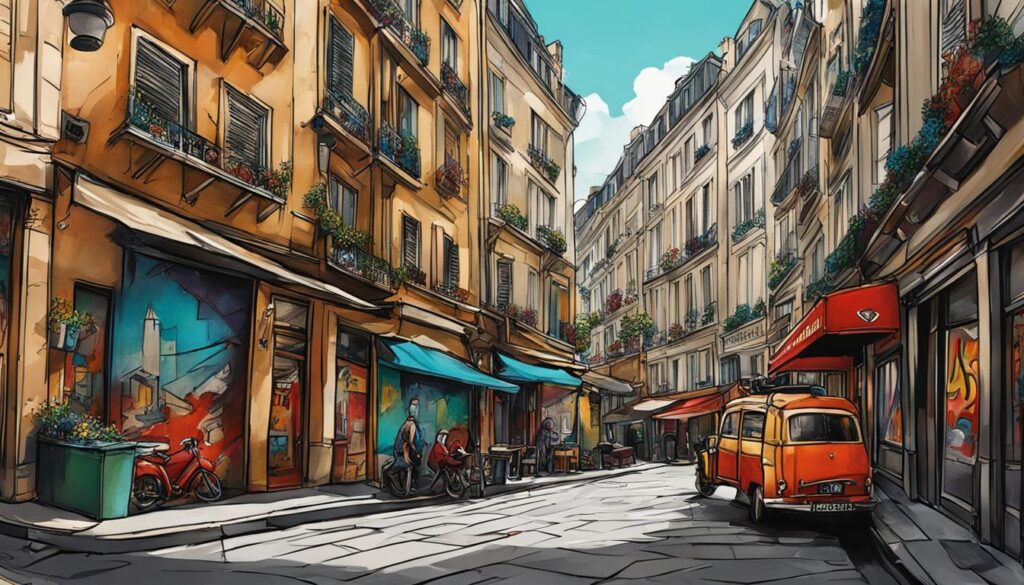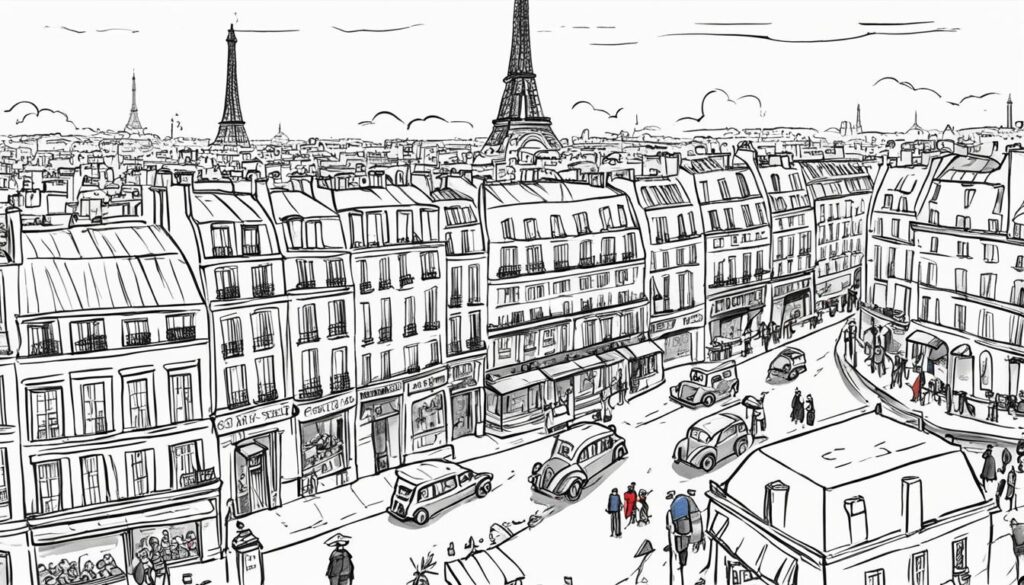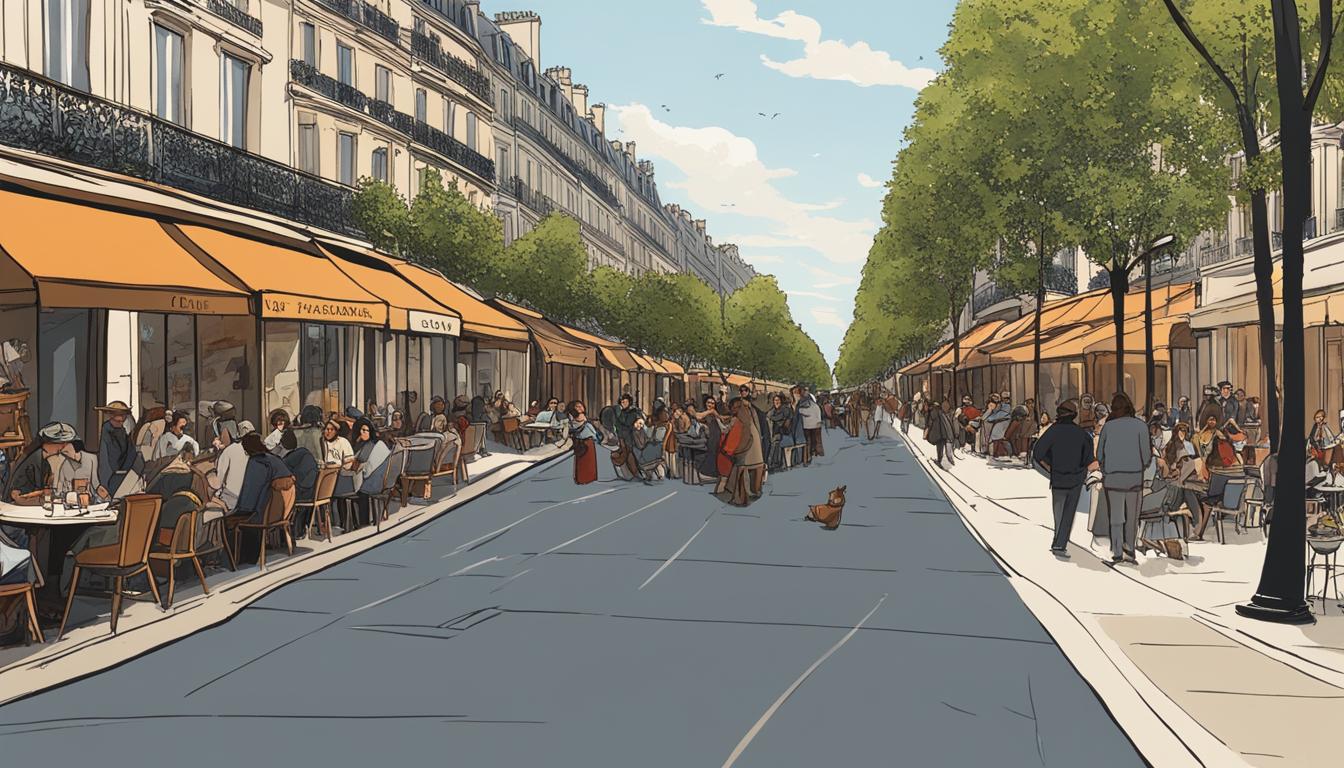Embark on a Parisian journey like no other in Edmund White’s “The Flaneur.” Offering a captivating book summary, this literary masterpiece takes readers on a stroll through the paradoxes of Paris. Through the eyes of a flaneur, immerse yourself in the unique charms of the City of Light and discover its hidden gems and contradictions.
About the Author
Edmund White is a prominent figure in the world of Parisian literature, known for his insightful exploration of the city’s culture. Born in Cincinnati, Ohio in 1940, White spent much of his early career in New York City, where he became an influential figure in the LGBT+ literary scene. He later moved to Paris, where he developed a deep love for the city and its culture, inspiring much of his later work. White has authored numerous books, including the highly acclaimed “The Flaneur,” which explores the paradoxes of Parisian life through the lens of a wandering observer.
White’s writing style often features a blend of fact and fiction, as well as autobiographical elements that provide readers with a unique perspective on his subjects. His works have received numerous awards and accolades, cementing his status as a master of Parisian literature. White’s extensive knowledge of the city’s culture and history is evident in “The Flaneur,” which offers readers a captivating journey through the paradoxes and complexities of Parisian life.
Introduction to the Flaneur
At the heart of Parisian culture lies the concept of the flaneur, a term coined in the 19th century to describe the act of wandering aimlessly through the city streets, observing and experiencing the surroundings. The flaneur is not merely a passive observer, but an active participant in the city’s life, engaging with the people and culture around them. The allure of the flaneur lies in their ability to embody both freedom and reflection, unencumbered by schedules or responsibilities.
The Parisian flaneur is celebrated in literature, art, and film, as a symbol of the city’s essence and identity. Flaneurs come from all walks of life, from poets and writers to aristocrats and vagabonds. What unites them is their shared appreciation for the beauty and contradictions of Parisian life.
Definition of Flaneur
The flaneur is a French term that refers to a person who wanders and observes the world around them, particularly in urban environments. The flaneur embodies the act of aimless wandering, observing urban life, and engaging with the city in a personal and direct way.
Parisian Flaneur
The Parisian flaneur is a unique figure that embodies the essence of Parisian culture. They are renowned for their ability to appreciate the beauty of the city, the richness of its art and culture, and the interactions among its diverse inhabitants. The Parisian flaneur is celebrated in literature and art, as a symbol of the city’s unique spirit and charm.
Flaneur Culture
The culture of the flaneur goes beyond the act of aimless wandering. It encompasses a way of life, a philosophy that values individual experience and observation. The flaneur culture is rooted in the idea that the richness of life lies not in productivity or achievement, but in the experiences we have and the people we meet along the way. In this sense, the culture of the flaneur reflects the unique spirit of Paris itself, one that values beauty, pleasure, and the richness of human experience.
Exploring Parisian Paradoxes
The Flaneur by Edmund White offers a unique exploration of Parisian paradoxes, shedding light on the contrasting elements that make the City of Light so intriguing.
One of the most significant paradoxes is the juxtaposition between tradition and modernity. As the city has evolved over time, ancient landmarks and customs hold steadfast alongside new, innovative structures and ways of thinking. This contrast is evident when exploring the vibrant Marais district, where 17th-century architecture blends with contemporary street art, boutique shops, and trendy cafes.
Another paradox lies in the duality of beauty and decay. Paris is renowned for its aesthetic charm, celebrated through impressive monuments like the Eiffel Tower and the Louvre Museum. However, decaying buildings, hidden alleyways, and street art also possess a distinct appeal, offering a glimpse into the city’s gritty yet enchanting underbelly.
Finally, “The Flaneur” invites readers to explore the paradox of urban exploration, which is the city’s conflict between gentrification and authenticity. As Paris evolves, neighborhoods transform, and communities shift. For instance, the once-bohemian Montmartre neighborhood has been somewhat gentrified, with tourist attractions replacing smaller cafes and ateliers. Thus, exploring the city’s lesser-known streets can offer a deeper glimpse into Paris’s authenticity and its history.

“The paved path, bordered with bushes; the sweep of the gravel; the ornamental lake; the wild, untrimmed flowers; the tidy little arbors; the games, the company, the sport—all of it was far from natural or innocent and seemed entirely orchestrated to make city people feel the abrupt change of atmosphere that going into the country was supposed to effect. ” — Edmund White, The Flaneur
Aesthetic Pleasures of Paris
One of the most enchanting aspects of Paris is undoubtedly its aesthetic appeal. From the stunning Haussmannian buildings to the magnificent gardens and museums, the city is a treasure trove of beauty. “The Flaneur” by Edmund White captures this essence of Parisian aesthetics by painting a vivid picture of the city’s visual delights.
Parisian architecture is a prime example of the city’s aesthetic charm, with its ornate balconies and grandiose facades. The book depicts the Haussmannian buildings as marvelous works of art that reflect the city’s rich history and culture. The different districts of Paris showcase unique architectural styles, such as the bohemian charm of Montmartre and the classical grandeur of the Louvre.
Art and culture are deeply ingrained in Parisian life, and White’s book highlights this with its descriptions of art galleries, museums, and opera houses. The Musée d’Orsay, for instance, is a popular tourist attraction that houses an impressive collection of Impressionist and Post-Impressionist art. The Opera Garnier is another magnificent venue, with its imposing façade and opulent interiors.
Gardens and parks also play a significant role in Parisian aesthetics, with their meticulously manicured lawns and exquisite fountains. “The Flaneur” depicts the Jardin du Luxembourg, one of the city’s most beautiful gardens, as a tranquil oasis that offers respite from the chaos of urban life.
The artistic and cultural richness of Paris is a defining feature of the city. It is a place where beauty is not just appreciated but celebrated. As “The Flaneur” illustrates, Parisian aesthetics are a testament to the city’s enduring allure.
Social Dynamics in Paris
Parisian society is a rich tapestry of social classes, each with its unique customs and traditions. In “The Flaneur,” Edmund White skillfully portrays the interactions between these classes, offering readers a fascinating glimpse into Parisian life.
The aristocrats are a prominent feature of Parisian society, with their grand estates and lavish lifestyles. They often mingle with the upper-middle class, who are educated and cultured but lack the wealth and status of the nobility. The middle class, on the other hand, is comprised of hardworking professionals and small business owners. They form the backbone of Parisian society, and their contributions are integral to the city’s economy and cultural life.
White also highlights the struggles of the lower classes, including street vendors, servants, and factory workers. Their lives are often fraught with hardship, and their interactions with the upper classes may be marked by tension and resentment.
“The Flaneur” demonstrates the intricate web of social dynamics that underpins Parisian society, from the grand boulevards to the narrow back alleys.
Whether admiring the glittering ballrooms of the aristocracy or mingling with the locals at a neighborhood cafe, the flaneur offers a unique perspective on the interactions that make up the diverse fabric of Parisian society.
Historical Significance of Paris
The charm of Paris lies in its rich history, which is evident in the city’s numerous historical landmarks. The book “The Flaneur” highlights the evolution of Paris through the centuries and how it has contributed to its present-day significance. From the Notre Dame Cathedral to the Louvre Museum, Parisian history is intricately woven into the fabric of the city.
One of the most iconic landmarks in Paris is the Eiffel Tower, designed by Gustave Eiffel for the 1889 World’s Fair. The tower serves as a symbol of innovation and progress, a testament to the city’s dedication to modernity.
“The history of a city can be told through its architecture.”
Graeme Greene
The architecture in Paris is a unique blend of various styles that have emerged over the centuries. From Gothic to Art Nouveau, the buildings in Paris tell a story of the city’s past and present. One such example is the Palais Garnier, a 19th-century opera house designed in the eclectic Beaux-Arts style. The building’s grandeur and opulence reflect the city’s cultural influence during the Belle Époque.

Famous Historical Landmarks of Paris
| Name of Landmark | Date Built | Architectural Style |
|---|---|---|
| Notre-Dame Cathedral | 1163-1345 | Gothic |
| The Louvre Museum | 1190- present | Renaissance, Baroque, Neoclassical |
| The Eiffel Tower | 1887-1889 | Art Nouveau |
| The Pantheon | 1758-1790 | Neoclassical |
| Palace of Versailles | 1623-1715 | Baroque |
The landmarks in Paris are not only a testament to its rich history but also inspire a sense of awe and wonder among visitors. Each landmark represents a part of Parisian history and is a testament to the city’s cultural and architectural achievements. Paris’s evolution from a small medieval town to a bustling metropolis is reflected in its landmarks, and they continue to inspire generations to come.
Literary Analysis
Edmund White’s writing style in “The Flaneur” is characterized by its poetic prose and vivid imagery, offering readers a sensory experience of Paris. White’s use of literary techniques, such as metaphor, symbolism, and allusion, enhances the narrative’s depth and complexity.
The book’s underlying themes include the search for identity, the tension between tradition and modernity, and the transience of beauty. White’s ability to weave these themes seamlessly into the narrative allows for a multifaceted exploration of Parisian life.
“I looked at him through the window and felt a lurch in my heart. I could hardly see his eyes behind his tinted glasses, but he seemed to be looking directly at me. This was the kind of coincidence that happens time and again in Paris streets, where there are so many people whom you feel you know, so many thoughts and moods that seem to correspond to your own.”
The above quote demonstrates both White’s poetic prose and the concept of coincidence that runs throughout the narrative. Through the eyes of the flaneur, White captures the essence of Parisian life and its people.
Overall, “The Flaneur” is a literary masterpiece that captures the paradoxes and complexities of Paris. Immerse yourself in White’s vivid imagery and poetic prose to experience the magic of the City of Light.
Relevance of The Flaneur Today
Although first published in 2001, “The Flaneur” by Edmund White retains its contemporary relevance today. The book provides a unique perspective on Parisian culture, which still captivates and inspires people from all over the world.
The modern-day flaneur, someone who casually strolls and observes their surroundings, is a concept that has only grown in importance. In an increasingly fast-paced world, the idea of slowing down to appreciate the beauty of one’s surroundings resonates more than ever. “The Flaneur” encourages readers to adopt a more contemplative approach to life and the world around them.
Furthermore, the book highlights the importance of cultural experiences and their ability to shape our understanding of the world. Parisian culture, with its rich history and sophisticated aesthetic, continues to be a major influence on contemporary art, literature, and fashion.
Through the lens of a flaneur, the paradoxes of Paris explored in the book, such as the tension between modernity and tradition, remain relevant. These contradictions remain a defining characteristic of modern-day Paris, as seen in the city’s diverse architecture and evolving entertainment scene.
The innovations and changes brought about by the 21st century have transformed Paris. However, “The Flaneur” allows us to explore the city and its culture in a timeless manner. The book inspires a deep appreciation of the beauty and complexity of Parisian culture, making it a must-read for anyone interested in the City of Light.
Conclusion
“The Flaneur: A Stroll through the Paradoxes of Paris” by Edmund White is a captivating journey through the unique charms of the City of Light. Through its exploration of paradoxes, aesthetic pleasures, social dynamics, and historical significance, the book offers readers a comprehensive portrait of Parisian life.
Edmund White’s writing style and use of literary techniques enrich the narrative, making it an essential read for anyone interested in Parisian literature and culture. Furthermore, the continued relevance of “The Flaneur” in today’s world underscores the enduring appeal of Paris and the concept of the modern-day flaneur.
Embark on this Parisian journey and uncover the beauty and contradictions that make this city a timeless inspiration. From the elegance of its architecture to the vibrancy of its street life, “The Flaneur” presents a multifaceted portrait of Paris that is sure to captivate readers for years to come.



